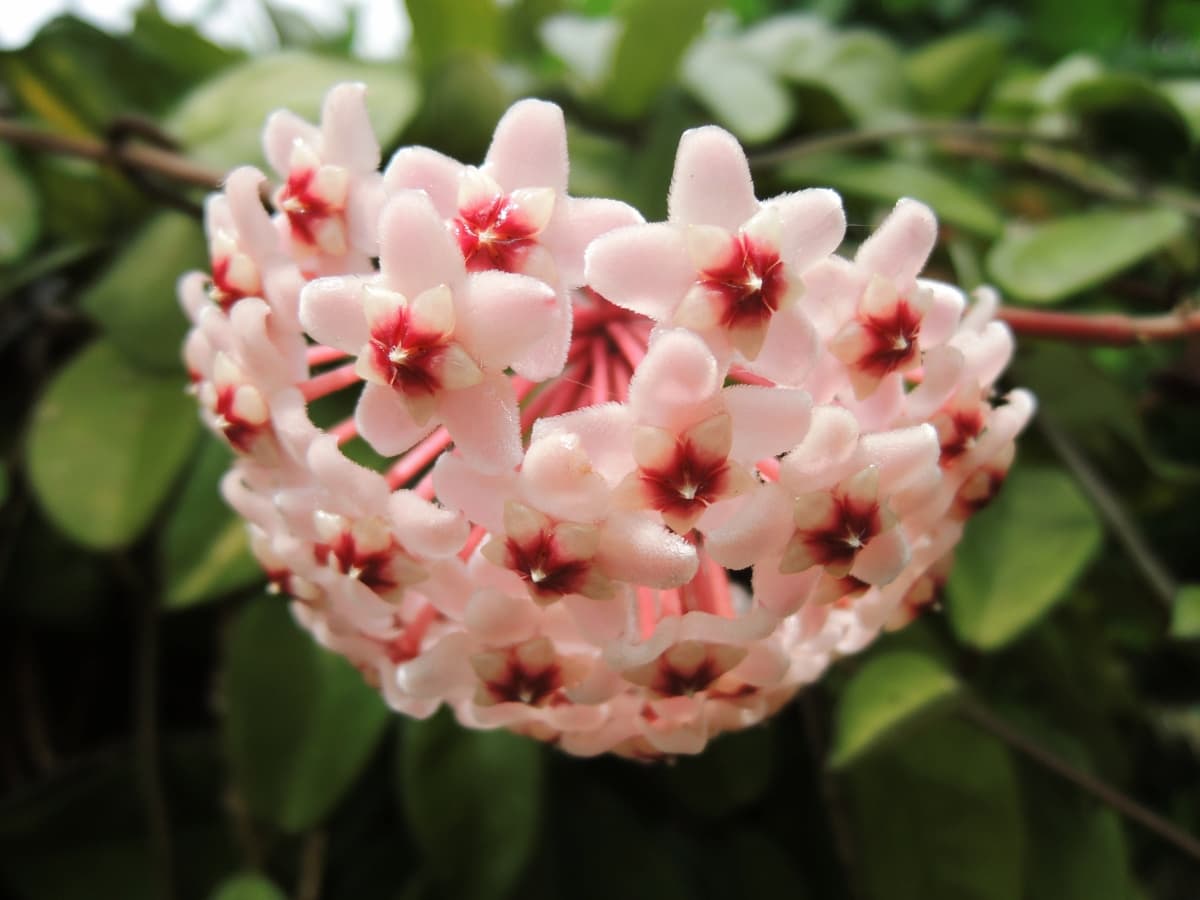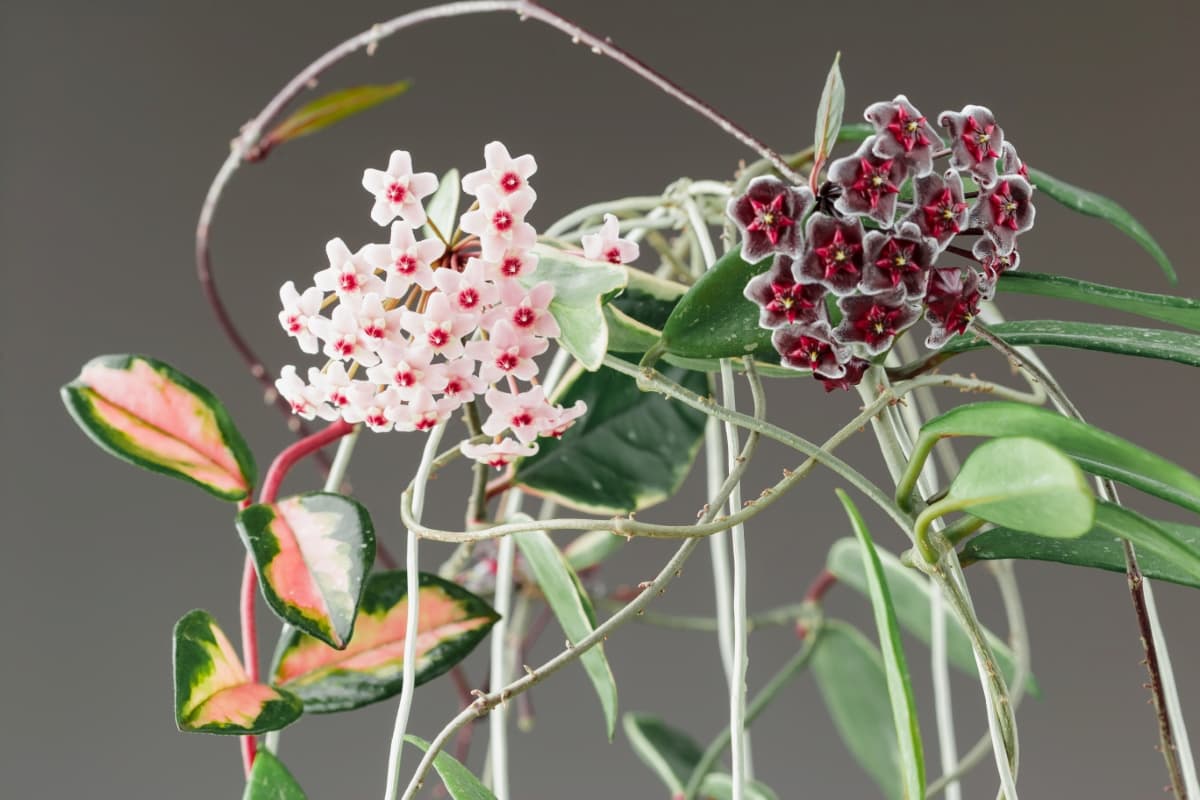Hoyas, or wax plants, are popular houseplants with beautiful, waxy flowers. If you want to expand your hoya collection or share these lovely plants with friends, propagation is the way to go. There are several methods you can use to propagate hoyas: from cuttings through air-layering, water, and soil. Each method has its advantages and requirements. Throughout this guide, we will explain each propagation method step-by-step, so you can successfully cultivate new hoyas. Let’s get started!

How to Propagate Hoyas
Understanding Hoya Propagation: A Comprehensive Guide
- There are several methods that can be used to propagate Hoya plants, including stem cuttings, leaf cuttings, and layering.
- What is the best method to propagate Hoya? Cuttings taken from internodal stems are the easiest and most effective way to propagate Hoya.
- Stem cuttings involve taking a section of the stem and placing it in a rooting medium until it develops roots.
- How to propagate Hoya from the leaf? Leaf cuttings involve removing a leaf and placing it in a moist substrate until it forms new shoots.
- Hoya Air-Layering involves bending a stem and burying a section of it in the soil until it develops roots.
Gathering the Necessary Materials for Hoya Propagation
- To ensure a smooth process, you will need a few key items. Firstly, you will require a healthy Hoya plant with well-established roots.
- Additionally, you will need a clean and sharp pair of pruning shears or scissors to take cuttings from the parent plant.
- It is also important to have a rooting hormone powder or gel to promote root growth in the cuttings.
- Furthermore, you will need small pots or containers and well-draining potting mix or perlite to plant the cuttings in.
- Lastly, a spray bottle filled with water will help keep the cuttings moist during the propagation process.
Choosing the Right Time and Conditions for Propagation
Temperature: Hoyas thrive in warm temperatures, ideally between 21°C and 27°C. It is crucial to provide a consistently warm environment for successful propagation. Avoid exposing your Hoya plant to extremely hot or cold temperatures, which can stress the plant and hinder root development.
Light: While hoyas appreciate bright light, direct sunlight can be too intense for newly propagated cuttings. Place the cuttings in a spot where it receives bright indirect sunlight or provides filtered light using sheer curtains or shade cloth.
Soil and Watering: A combination of perlite, peat moss, and coarse sand works well for hoya propagation. Avoid overwatering the cuttings, as this can lead to rotting. Instead, water the cuttings when the top inch of the soil feels dry. Mist the cuttings regularly to maintain humidity.
In case you missed it: Jade Plant Propagation: From Stem Cuttings, Leaf Cuttings, Division, and Offsets

Selecting Healthy Parent Plants for Successful Propagation
Selecting healthy parent plants is crucial for successful hoya propagation. Healthy plants are more likely to produce strong and viable offspring. When choosing parent plants, look for lush green foliage that is free from any signs of disease or pests. Avoid plants that have yellowing leaves, spots, or wilting.
Additionally, select plants that have a strong and sturdy structure, as this indicates good overall health. It is also important to choose parent plants with a history of successful flowering, as this indicates their reproductive capability. By carefully selecting healthy parent plants, you can increase the chances of successful hoya propagation.
Preparing the Propagation Medium: Soil, Water, or Air Layering
Soil propagation is the most common method involving a well-draining potting mix. Choosing a mixture that retains moisture while allowing excess water to drain freely is crucial. Typically, peat moss, perlite, and vermiculite are mixed together. How to propagate Hoya in soil? Make a cutting of a healthy hoya plant, remove the leaves at the lower portion, and plant it in the soil directly after taking the cutting. Until the roots begin to take hold, ensure the soil remains consistently moist.
Water propagation is another popular method that involves placing the Hoya cutting in a water container. This method allows you to monitor root development easily. To prevent rot, make sure to change the water every few days. Once the roots are well-formed, transfer the cutting to a pot with soil. Air layering is a more advanced technique used for larger hoya plants. It involves creating a small wound on a healthy stem, applying rooting hormone, and wrapping it with moist sphagnum moss. After a few weeks, roots will form within the moss. Carefully cut below the rooted section and transfer it to a pot with soil.
Taking Cuttings: Techniques and Best Practices
- Selecting the Right Time: Choosing the right time to take hoya cuttings is crucial for their propagation. The ideal time is during the growing season, typically in spring or early summer.
- Choosing the Right Stem: When selecting a stem for cutting, it is important to ensure it is healthy and disease-free. Look for sturdy stems, free from any signs of damage or pests, and have at least two to three nodes.
- Preparing the Cutting: Use a clean, sharp pair of pruning shears or scissors to prepare the cutting. Make a clean cut just below a node, ensuring the cutting is around 4 to 6 inches long. Remove the lower portion leaves from the cutting, leaving only a couple of leaves at the top.
In case you missed it: ZZ Plant Propagation (zamioculcas Zamiifolia): From Leaf Cuttings, Stem Cuttings, Division, and in Water

Rooting Hormones: Enhancing Success Rates in Hoya Propagation
Rooting hormones play a vital role in propagation. These hormones, such as auxins, stimulate root development in plant cuttings, ensuring better survival and growth. By applying rooting hormones to Hoya cuttings, gardeners and plant enthusiasts can increase the chances of successful propagation.
Rooting hormones act as a catalyst, promoting the formation of new roots and providing the necessary nutrients for their development. By doing so, the plant can establish a strong root system, making it easier to absorb the water and nutrients it needs. Overall, the use of rooting hormones in Hoya propagation significantly improves success rates and ensures healthier, more robust plants.
Caring for Hoya Cuttings During the Rooting Process
- First, prepare a suitable rooting medium, such as well-draining soil mixed with perlite or vermiculite.
- Ensure the cuttings have at least two nodes, and remove any leaves near the bottom. Dip the cut end in a rooting hormone to encourage root growth.
- Place the cuttings in a warm and bright location, avoiding direct sunlight. Mist the leaves regularly to maintain humidity.
- Water the cuttings when the soil feels dry, but avoid overwatering.
- How long does it take to propagate Hoya? After 3-4 weeks, roots will start to develop. Once the roots are well-established, transplant the cuttings into pots with well-draining soil.
Transplanting Rooted Cuttings Into Individual Containers
- Once the cuttings have developed roots, carefully remove them from the rooting medium and gently place them into pots filled with well-draining soil mix.
- Ensure each cutting is positioned at the same depth in the rooting medium.
- Water the newly transplanted cuttings thoroughly and place them in a well-lit area away from direct sunlight.
- Regularly monitor the soil moisture to promote healthy growth.
- Transplanting rooted cuttings into individual containers allows for better growth and development of the hoya plants.
Nurturing Young Hoya Plants for Optimal Growth and Development
To ensure success, provide them with the right growing conditions. Hoya plants thrive in bright but indirect light, so place them near a window with filtered sunlight. Maintain a moderate temperature range between 15-24°C to prevent stress. Water your Hoya plants regularly, allowing the soil to dry out slightly between waterings. Avoid overwatering, as it leads to root rot.
In case you missed it: How to Propagate Peperomia: From Leaf Cuttings, Stem Cuttings, Divisions, and in the Water

Fertilize your Hoya plants every 2-4 weeks during the growing season with a balanced, diluted liquid fertilizer. Prune your Hoya plants to encourage bushier growth and remove any dead or damaged parts. Your young Hoya plants will flourish and bring beauty to your space with proper care.
Conclusion
Propagating Hoyas can be done through various methods, including cuttings, air-layering, water, and soil. Each method has advantages and disadvantages, and the choice depends on the desired outcome and available resources. Whatever the method you have chosen, proper care and patience are essential for the successful propagation of Hoyas.
- Ultimate Guide to Ossabaw Island Hog: Breeding, Raising, Diet, and Care
- Ultimate Guide to Juliana Pig: Raising Facts, Size, Diet, Care, and Lifespan
- Raising Lleyn Sheep: Disadvantages, Price, Uses, Characteristics, and Care
- Ultimate Guide to Meishan Pig: Breed Facts, Breeding, Raising, and Care
- Ultimate Guide to Teacup Pigs: Raising, Diet, Lifespan, Cost, and Care
- Guide to Raising Poll Dorset Sheep: Facts, Profile, Characteristics, Uses, and Care
- Ultimate Guide to Bighorn Sheep: Characteristics, Diet, Lifespan, Breeding, and Lifecycle
- Ultimate Guide to Raising Katahdin Sheep: Farming Facts, Breed Profile, Uses, and Care
- Ultimate Guide to Raising Oreo Cows: Belted Galloways Farming Facts, Profile, Uses, and Care